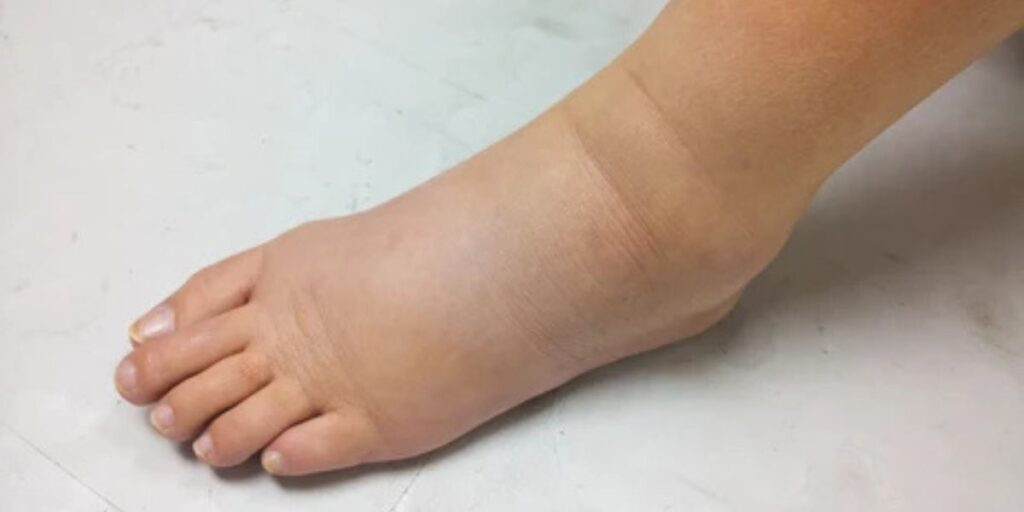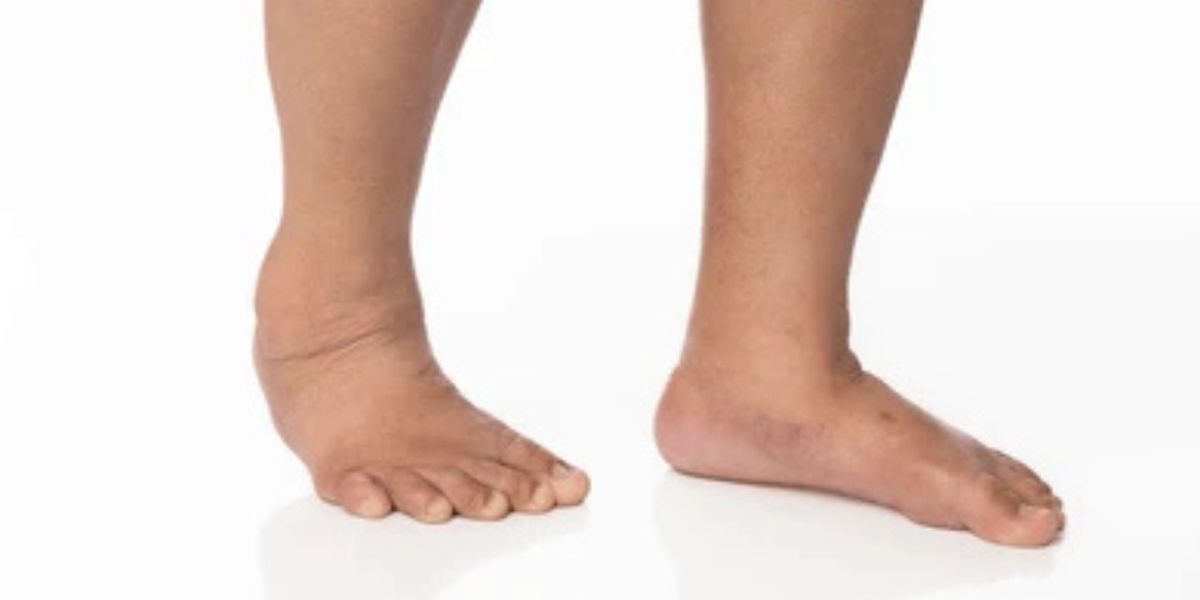What Is Lymphedema?
Lymphedema in feet happens when the body’s lymphatic system doesn’t drain fluid properly, causing swelling, pain, and discomfort. This condition can affect anyone, but it’s more common in people who’ve had surgery, radiation, or infections. When left untreated, it can lead to chronic limb swelling and limit mobility. The feet may feel heavy, tight, or numb, making it hard to walk or wear shoes. Foot swelling in lymphedema often starts slowly and worsens over time. Doctors usually recommend early care like lymphedema compression therapy or manual lymphatic drainage to control symptoms. With the right routine and lymphedema foot care, many people can live comfortably and avoid long-term damage.
Overview and Key Facts
In the U.S., lymphedema affects millions. It often shows as chronic limb swelling in the arms or legs. You may notice swelling in legs and arms that worsens by day’s end. Foot health also suffers with Lymphedema in feet being common.
Early care and edema management matter. Specialists in Oncology rehabilitation and Mayo Clinic lymphedema programs stress early treatment. Proper support limits complications and improves quality of life.
Symptoms of Lymphedema
First symptom is mild puffiness after waking. You may see foot swelling in lymphedema, tight skin, or restricted joint movement. Over time, tissues may harden, known as Fibrosis. Skin might thicken and feel rough.
Advanced signs include signs of Cellulitis, a dangerous skin infection. You might experience heaviness and aching pain in the limb. These signs need prompt evaluation for accurate Lymphedema diagnosis.
Causes of Lymphedema
The root cause is Lymphatic system blockage. Inherited issues lead to Primary lymphedema, sometimes appearing in childhood. Others experience Secondary lymphedema from cancer surgery or radiation. Infections also cause it, especially in tropical regions.
Obesity, injuries, and vein issues can worsen the condition. Each trigger stops lymph from draining. That failure forces fluid to pool, damaging skin and tissue over time.
Diagnosis and Stages
Doctors use physical exams, measure limb size and perform Lymphoscintigraphy imaging. This helps locate blockages. They also use ultrasound or MRI to assess tissue changes.
Staging of lymphedema shows its severity:
| Stage | Features |
|---|---|
| Stage 0 | No visible swelling |
| Stage 1 | Soft pitting edema |
| Stage 2 | Non-pitting, firm swelling |
| Stage 3 | Skin thickening, severe swelling |
Understanding Staging of lymphedema ensures the right approach.
Lymphedema in Feet: Special Focus
Feet suffer from extra fluid pressure, often limiting movement. This forces changes in how you walk and can worsen swelling. Swelling in extremities makes fitting shoes hard and weakens balance.
Specific foot care matters. Proper shoes and daily inspection monitor growth of swelling. Early attention helps prevent more serious complications.

Treatment Options for Lymphedema
Treatment starts with Complete Decongestive Therapy (CDT). It includes Manual lymph drainage (MLD), compression garments, exercise, and skin care. This eases swelling and boosts drainage.
For tougher cases, Pneumatic compression devices assist. Some patients get Lymph node transfer surgery or Microsurgical treatment for lymphedema. Programs at Lymphedema clinics USA drive innovation in care.
Complications of Lymphedema
Swelling can progress into Cellulitis and chronic infections. The repetitive inflammation may cause Fibrosis and tissue hardening. You might face issues like pain, reduced mobility, and emotional stress.
Untreated cases can lead to severe infections or disability. Many patients benefit from local Lymphedema support groups and psychiatric help for coping.
Outlook and Long-Term Prognosis
Long-term outcomes improve with early diagnosis and consistent care. Many patients thrive with Lymphedema prevention strategies and physical therapy for lymphedema. Regular use of compression garments for lymphedema helps maintain progress and prevent setbacks.
Stay in touch with certified therapists and monitor limb health. With good self-care, people can maintain good mobility and independence.
Prevention Tips and Daily Management
Daily routine matters. Wash and moisturize skin, inspect for cuts, and avoid tight bands. Elevate limbs when resting to ease drainage. Join Lymphedema therapy programs to learn proper massage and exercise.
Invest in quality garments and rotate use to avoid pressure spots. Seek support from groups to stay motivated and informed.
Wrapping Up: Lymphedema in Feet
Lymphedema is manageable with prompt care, especially for feet. Daily rest, proper Lymphedema foot care, and early intervention help prevent progression. You don’t have to face Mobility issues with lymphedema alone.
Talk to specialists at trusted centers or support groups. With the right tools and mindset, a full life remains possible—even when facing foot swelling and persistent edema.
for more information visit us:
FAQs
Q: How do you treat lymphedema in the foot?
Lymphedema in the foot is treated with compression therapy, manual lymphatic drainage, exercise, and proper skin care.
Q: What does lymphedema look like in the feet?
It appears as persistent swelling, tight or shiny skin, and sometimes skin thickening or reduced flexibility in the toes and ankles.
Q: What are the warning signs of lymphedema?
Early signs include swelling, heaviness, aching, and tightness in the skin, especially in the toes, ankles, or lower leg.
Q: Is it good to walk with lymphedema?
Yes, walking helps improve lymphatic flow and reduce swelling, but it should be done gently and with proper footwear and support.
Welcome to Heel Tooth! I’m Lee Marvin.

